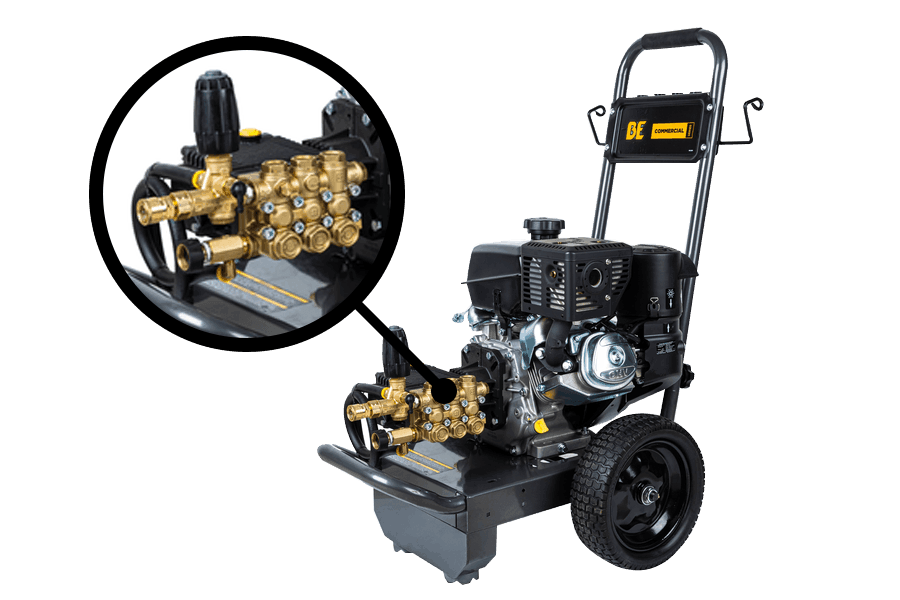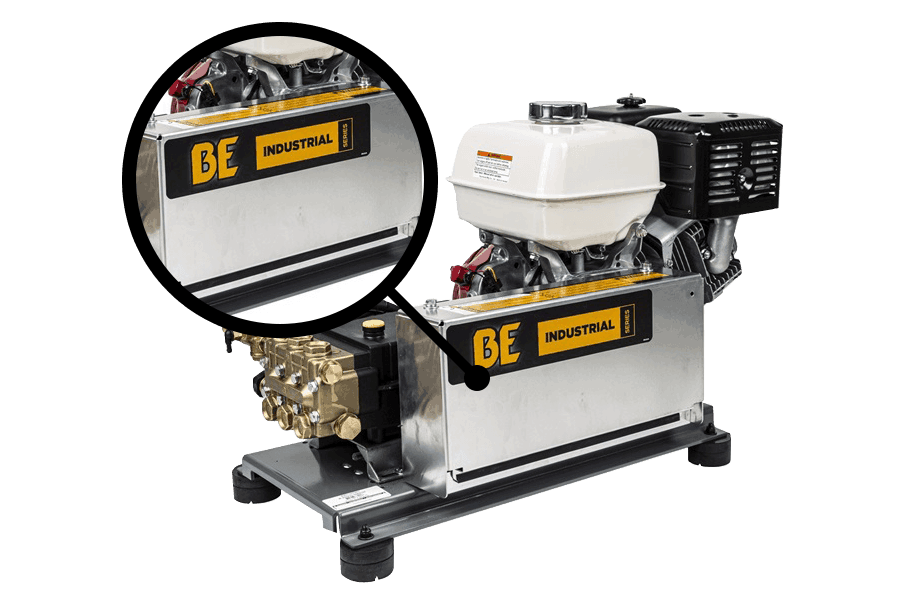DRIVE SYSTEMS COMPARISON
A "Direct Drive" pump has a hollow shaft, which simply slides onto the drive shaft of a motor or engine. The flange on the pump is mounted to the face of the engine or shaft end of the motor. Normal gasoline engine speed is about 3450 RPM. Since the pump is connected directly to the engine shaft, the pump RPM is the same as the engine RPM.
A "Belt Drive" pump has a pulley mounted to its solid shaft and is driven by one of more belts that are attached to a pulley on the motor or engine. The pulley system allows these pumps to turn at a much lower RPM than a direct drive pump (typically 900-1740 RPM). The belt drive pump crankcase has a larger oil capacity. This, combined with the lower RPM of the belt drive pump, allows the pump to run much cooler than a direct drive pump.
DRIVE SYSTEMS GUIDE
 GOOD GOOD  BETTER BETTER   EXCELLENT EXCELLENT    BEST BEST
|
 |
 |
|---|---|---|
| DIRECT DRIVE | BELT DRIVE | |
| SERIES |   |
 |
| PRICE | $ - $$ | $$$ - $$$$ |
| WEIGHT / SIZE |  TO TO  |
   TO TO    |
| MAX PSI |     |
    |
| HEAT MANAGEMENT |   |
   |
| EASE OF MAINTENANCE |
    |
  |
| LIFE SPAN |   |
    |
Benefits of Direct Drive
- Compact Design
- Less moving parts
- Lower cost
- Very Low maintenance
Benefits of Belt Drive
- Better heat management
- Less vibration transfer
- Lower RPM
- Longer lifetime
